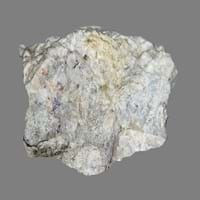Definition
Dacite is a volcanic igneous rock which is rintermediate in composition between andesite and rhyolite
Skarns are formed during regional or contact metamorphism and from a variety of metasomatic processes involving fluids of magmatic, metamorphic, and/or marine origin
Origin
Romania and Moldova, Europe
USA, Australia
Discoverer
Unknown
Tornebohm
Etymology
From Dacia, a province of the Roman Empire which lay between the Danube River and Carpathian Mountains where the rock was first described
From an old Swedish mining term originally used to describe a type of silicate gangue or waste rock.
Class
Igneous Rocks
Metamorphic Rocks
Sub-Class
Durable Rock, Soft Rock
Durable Rock, Hard Rock
Group
Volcanic
Not Applicable
Other Categories
Fine Grained Rock, Medium Grained Rock, Opaque Rock
Fine Grained Rock, Opaque Rock
Texture
Aphanitic to Porphyritic
Earthy, Mud-rich, Rough
Color
Bluish - Grey, Brown, Grey, Light to Dark Grey
Black, Brown, Colourless, Green, Grey, White
Durability
Durable
Durable
Appearance
Vesicular
Dull
Interior Uses
Decorative Aggregates, Entryways, Interior Decoration
Decorative Aggregates, Entryways, Interior Decoration
Exterior Uses
As Building Stone, Paving Stone, Garden Decoration
As Building Stone, As Facing Stone, Garden Decoration, Paving Stone
Other Architectural Uses
Curbing
Curbing
Construction Industry
As Dimension Stone, Construction Aggregate, for Road Aggregate, Landscaping
As a Flux in the Production of Steel and Pig Iron, As a Sintering Agent in Steel Industry to process Iron Ore, As Dimension Stone, Gold and Silver production, Manufacture of Magnesium and Dolomite Refractories
Medical Industry
Not Yet Used
Not Applicable
Antiquity Uses
Artifacts
Artifacts, Monuments, Sculpture
Commercial Uses
Commemorative Tablets, Creating Artwork
Creating Artwork, Gemstone, Jewelry, Metallurgical Flux, Source of Magnesia (MgO)
Types
Footwall Dacite, Hanging wall Dacite, Tuff and Biotite Dacite
Endoskarns
Features
Host Rock for Lead, Is one of the oldest rock
Host Rock for Lead, Zinc and Copper Deposits
Archaeological Significance
Monuments
Not Yet Used
Used
Famous Monuments
Not Applicable
Data Not Available
Sculpture
Not Yet Used
Used
Famous Sculptures
Not Applicable
Data Not Available
Pictographs
Used
Not Used
Petroglyphs
Used
Not Used
Figurines
Not Yet Used
Used
Formation
Dacitic magma is formed by the subduction of young oceanic crust under a thick felsic continental plate. Further, the Oceanic crust is hydrothermally altered as quartz and sodium are added.
Due to change in environmental conditions, rocks are heated and pressurized deep inside the Earth's surface. Skarn is formed from the extreme heat caused by magma or by the intense collisions and friction of tectonic plates.
Mineral Content
Amphibole, Apatite, Biotite, Feldspar, Garnet, Hornblade, Magnetite, Plagioclase, Pyroxene, Quartz, Zircon
Calcite, Enstatite, Epidote, Garnet, Magnetite, Pyroxene, Titanite
Compound Content
Ca, Fe, Potassium Oxide, Mg, Potassium, Silicon Dioxide
Au, CaO, Carbon Dioxide, Cu, Fe, MgO
Types of Metamorphism
Burial Metamorphism, Cataclastic Metamorphism
Burial Metamorphism, Cataclastic Metamorphism, Contact Metamorphism, Hydrothermal Metamorphism, Impact Metamorphism, Regional Metamorphism
Types of Weathering
Biological Weathering, Chemical Weathering, Mechanical Weathering
Not Applicable
Types of Erosion
Chemical Erosion
Not Applicable
Grain Size
Medium to Fine Coarse Grained
Fine Grained
Fracture
Conchoidal
Irregular
Streak
White
Light to dark brown
Porosity
Less Porous
Less Porous
Luster
Subvitreous to Dull
Waxy and Dull
Toughness
Not Available
2.4
Specific Gravity
2.86-2.87
2.86
Transparency
Translucent
Opaque
Density
2.77-2.771 g/cm3
2.8-2.9 g/cm3
Resistance
Heat Resistant, Impact Resistant, Pressure Resistant, Wear Resistant
Heat Resistant
Deposits in Eastern Continents
Asia
Not Yet Found
China, India, Russia, Saudi Arabia, South Korea, Sri Lanka
Africa
Not Yet Found
South Africa, Western Africa
Europe
France, Greece, Romania, Scotland, Spain
United Kingdom
Others
Not Yet Found
Not Yet Found
Deposits in Western Continents
South America
Argentina, Bolivia, Chile, Colombia, Ecuador, Peru, Venezuela
Brazil, Colombia, Paraguay
Deposits in Oceania Continent
Australia
New Zealand, South Australia, Western Australia
Central Australia, Western Australia
All about Dacite and Skarn Properties
Know all about Dacite and Skarn properties here. All properties of rocks are important as they define the type of rock and its application. Dacite belongs to Igneous Rocks while Skarn belongs to Metamorphic Rocks.Texture of Dacite is Aphanitic to Porphyritic whereas that of Skarn is Earthy, Mud-rich, Rough. Dacite appears Vesicular and Skarn appears Dull. The luster of Dacite is subvitreous to dull while that of Skarn is waxy and dull. Dacite is available in bluish - grey, brown, grey, light to dark grey colors whereas Skarn is available in black, brown, colourless, green, grey, white colors. The commercial uses of Dacite are commemorative tablets, creating artwork and that of Skarn are creating artwork, gemstone, jewelry, metallurgical flux, source of magnesia (mgo).










